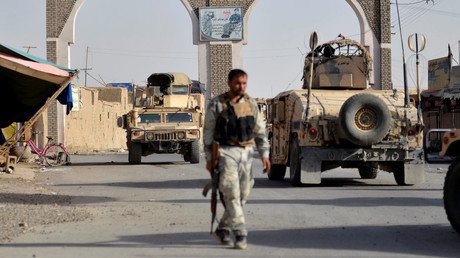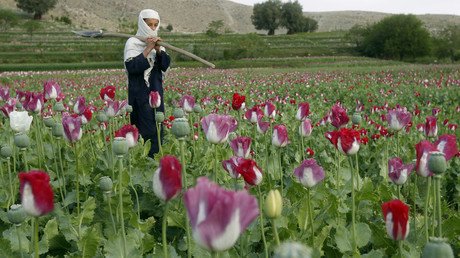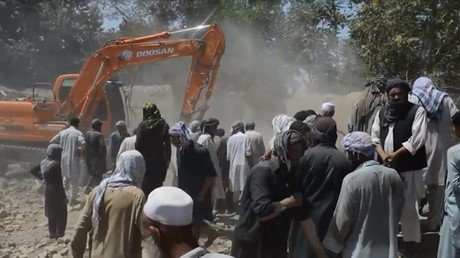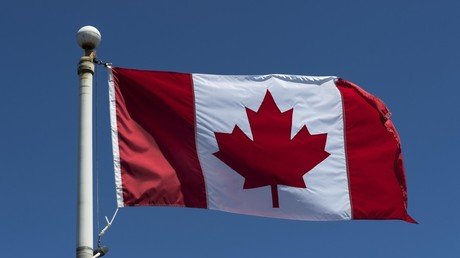US losing in Afghanistan: Like Viet Cong, Taliban knows that waiting it out will defeat invaders
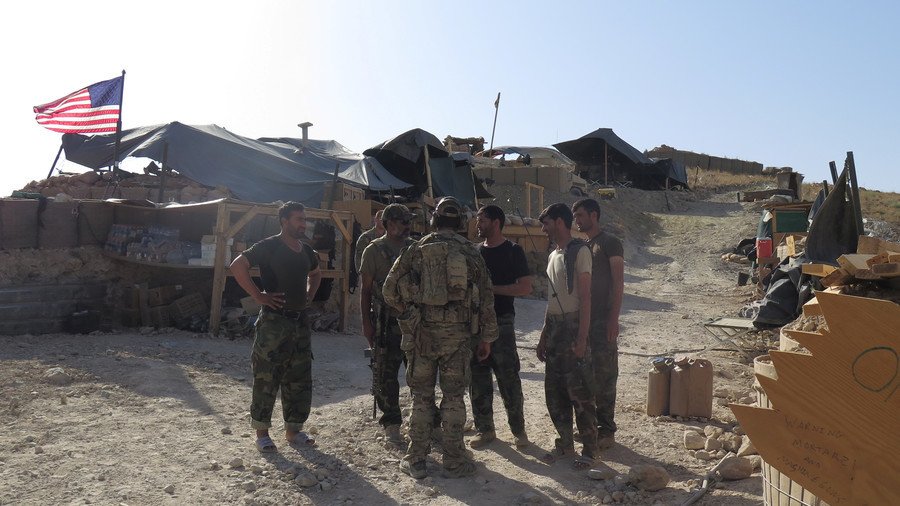
The latest conflicting reports about whether or not the Taliban has taken the strategic city of Ghazni between the Afghan capital of Kabul and Kandahar reflect the dilemma and difficulties that the American forces face today.
The concerns come despite the firepower and technology that the US has applied against an insurgent force, which has taken over more than 50 percent of the country. This is despite America having almost completely driven out the Taliban when it first invaded Afghanistan in late 2001.
The battle for Ghazni and indeed the effort to defeat the Taliban in remote areas of the country suggest that, notwithstanding the intelligence, technology and communications capabilities at its disposal, the US is losing the battle to secure the country.
If the Taliban occupies Ghazni by defeating Afghan forces, it effectively would cut off southern Afghanistan from the Kabul government, which would represent a significant development.
As one intelligence official recently told this writer, if the US were to pull its troops out of Afghanistan, Kabul and the corrupt US-installed government there wouldn’t last beyond a week despite the 16 years that the US has been fighting in the country.
Indeed, the Taliban have shown no intention of joining the government, and refuse to negotiate anything as long as foreign forces, namely the US and its NATO allies, remain in the country.
The Taliban, through its insurgent tactics, have demonstrated the ability to attack Afghan forces in Kabul despite all the security that has been employed there and the training the US has provided to the Afghan military and security forces.
It raises alarm over how the Taliban can launch attacks even in the capital of Kabul despite increased air attacks under President Donald Trump’s recently announced policy of intensifying US action and changing the rules of engagement from the strictures that existed on US forces under the Obama administration.
The Taliban, originally created by the Pakistani intelligence service, the ISI, or Inter-Services Intelligence, had reportedly been joined in the battle for Ghazni by foreign insurgent forces.
The Taliban’s infiltration of peoples’ homes and their nighttime fighting of Afghan forces to capture Ghazni show some similarities to what US forces experienced with the Viet Cong in Vietnam during the 1960s. Despite all the firepower, technology and massive numbers of American forces that were employed, it wasn’t sufficient to defeat a homegrown insurgency that was predominantly comprised of local fighters.
As it was, the VC battled US forces for some seven years, but fought the French for almost 20 years before that with the beginning of the First Indochina War in 1946 in what then was French Indochina. The French fought the then-Viet Minh led by Ho Chi Minh, who later would become the leader of North Vietnam and the conventional North Vietnamese army and VC forces that would fight against the Americans.
“Between 1965 and 1972, the US fought a traditional war against the North Vietnamese army,” wrote author George Winston for War History Online.
“At the same time, they fought a counterinsurgency (COIN) campaign against Viet Cong guerilla soldiers,” Winston said. “The US also fought COIN campaigns in Afghanistan from 2001 to 2014 and in Iraq from 2003 to 2011.”
Simply put, counterinsurgency in the current sense is to look at the local population not as the enemy, but as people needing protection. It combines military with local efforts to win the hearts and minds of the people against insurgent forces that seek to topple the government.
The VC demonstrated repeatedly that, despite defeats like US officials now are claiming against the Taliban in the attempt to take over Ghazni, they lived to fight again another day, employing insurgency tactics that predated advanced technology. It also suggests that, given the Taliban’s success in occupying Ghazni, even for a little while, intelligence on the Taliban employing some of the latest technology, including human intelligence, is proving insufficient.
For example, all the intelligence at the disposal of the US never picked up any indication of the Taliban amassing to launch an attack on Ghazni in the first place. One of the reasons is that the Taliban blends in with the local population, which oftentimes surrounds remote US and allied strongholds, making it most difficult for satellites and other communications to be effective.
“The current fighting in and around Ghazni City indicates that the Taliban has a detailed plan to tie up Afghan forces while attempting to seize the provincial capital,” said Bill Roggio in the Long War Journal.
“Additionally, the Taliban was able to mass its forces undetected. The Afghan military was clearly caught off guard and is struggling to get into the fight four days after the Taliban launched its attack,” Roggio added.
No foreign invader has ever taken over Afghanistan permanently. Like the Viet Cong, the Taliban know that it just needs to wait out the US, seeing the opposition that grew in the US to the Vietnam War, with the same concerns mounting in Congress now on how long American forces will remain in Afghanistan.
It is apparent that the current Trump administration’s strategy of increasing troop levels isn’t working. The US and its NATO allies had ceased a combat role in Afghanistan in 2014 but continued instead to advise and train Afghan security forces.
US and Afghan forces have all but abandoned any COIN strategy which then Gen. David Petraeus employed first in Iraq and then used it in Afghanistan with promising results.
“He was, after all, the person who, more than any other, brought Iraq back from the brink of total disaster after he assumed command of US forces there in 2007,” said war correspondent Peter Bergen.
“To understand how daunting a task that was, recall that when Petraeus took over in Iraq, the country was embroiled in a civil war so vicious that civilians were dying at the rate of 90 a day,” he said.
Bergen went on to point out that Petraeus then developed a new counterinsurgency doctrine which laid the foundation in a new Army field manual of tactics employed in Afghanistan until 2014.
“The doctrine in this new manual deeply informed how the US military would fight the wars in Iraq and Afghanistan,” Bergen said.
“The manual pointed to such unsuccessful counterinsurgency practices as overemphasizing killing and capturing the enemy, rather than making conditions secure for the populace, conducting large-scale operations as the norm, and concentrating military forces in large bases for protection.”
Despite all the training that the US has since provided to the Afghan military and security forces, however, they still require America’s assistance in taking back areas overrun by the Taliban but are unable to hold the areas permanently. Counterinsurgency practices of trying to win the hearts and minds of the local population have long been abandoned.
This is what just occurred in the most recent battle for Ghazni. Afghan security forces were spread out too far to hold Ghazni and, as a consequence, the Taliban was able to capture the main road from Ghazni that links Kabul with the south of the country.
The Taliban strategy, as it has demonstrated across Afghanistan for years, is to take an area, occupy until kicked out, but then launch attacks elsewhere in the country, causing Afghan security forces to be split up. Once those forces leave to chase the Taliban out of another part of the country, local Taliban forces then re-emerge, as has occurred in Ghazni and especially elsewhere in remote areas of the country.
If Afghan security forces are to occupy an area, they need to insure their supply lines remain intact. They are constantly under attack by the Taliban, making any effort for Afghan forces to hold an area only temporary. As a consequence, the war goes on without remedy, with no indication that the Taliban intend to call it quits.
Adding to the dilemma over what US policy should be in Afghanistan are reports that Afghan security forces have actually dropped in numbers as the security situation continues to deteriorate. Over the past year, the number of Afghan security forces has decreased by about 11 percent, making the US mission even more challenging in its advise-and-train role. Invariably, US forces need to resort to a more combative role, for which they are ill-equipped and instead must rely on the limited number of US Special Forces who are providing the training.
Clearly, a military solution – whether Vietnam, Iraq or Afghanistan – hasn’t worked before, or now. Russian officials inform me that they have had a standing group on Afghanistan to explore with regional countries alternative approaches toward a peaceful resolution of the war in Afghanistan.
However, the US has ignored repeated invitations to participate. Without the US, one Russian official told me, such a solution cannot be reached. Perhaps now the Trump administration needs to reconsider that stance and put aside its anti-Russian mantra in order to cooperatively work with regional countries and – yes, Russia – to find that solution.
Think your friends would be interested? Share this story!
The statements, views and opinions expressed in this column are solely those of the author and do not necessarily represent those of RT.

